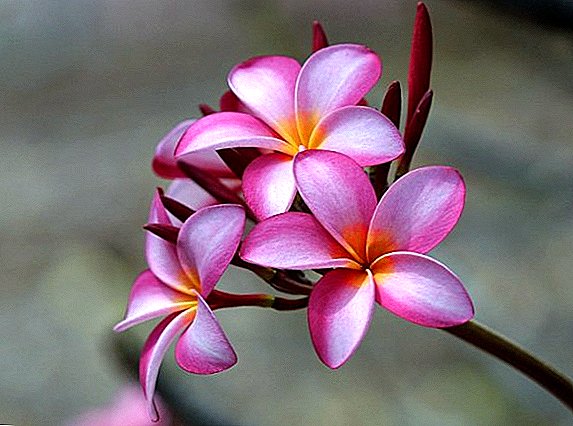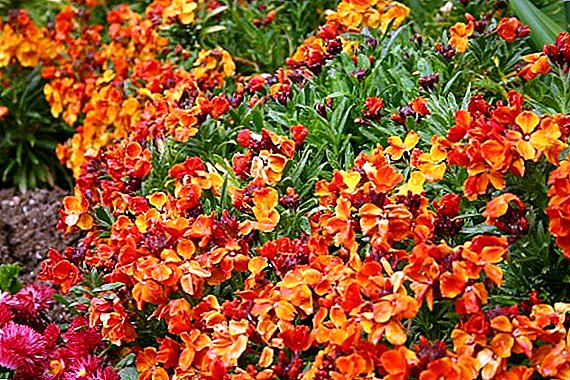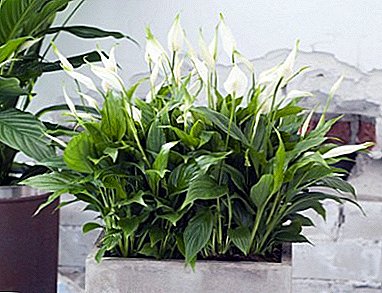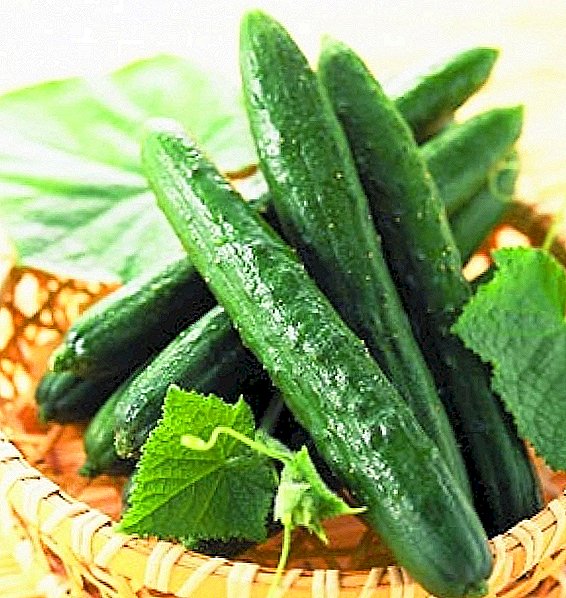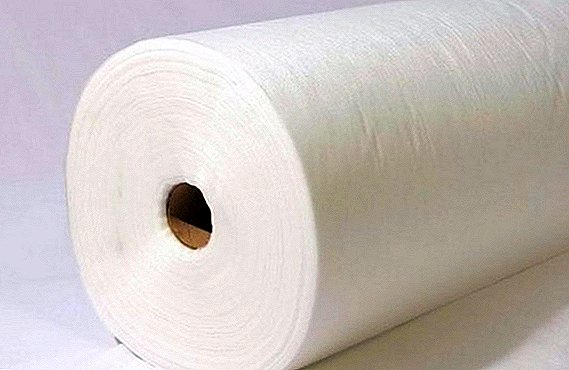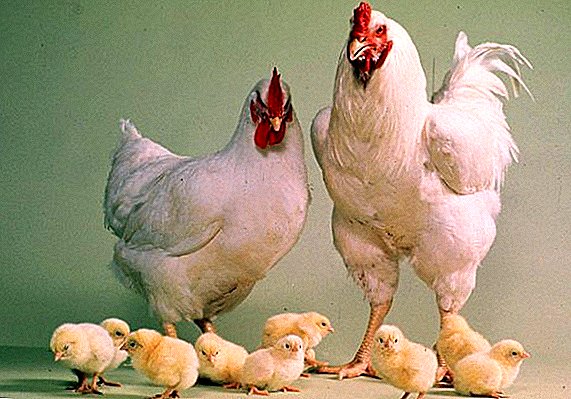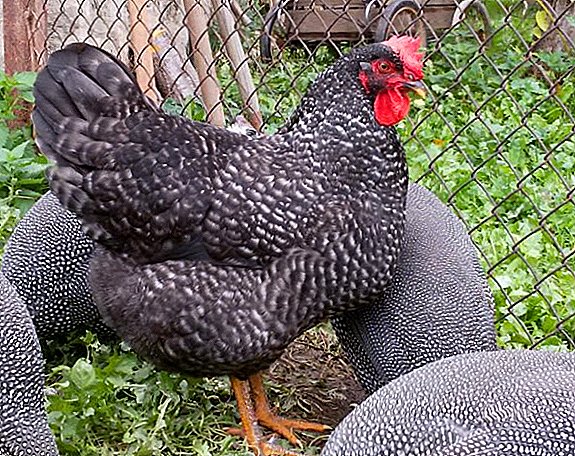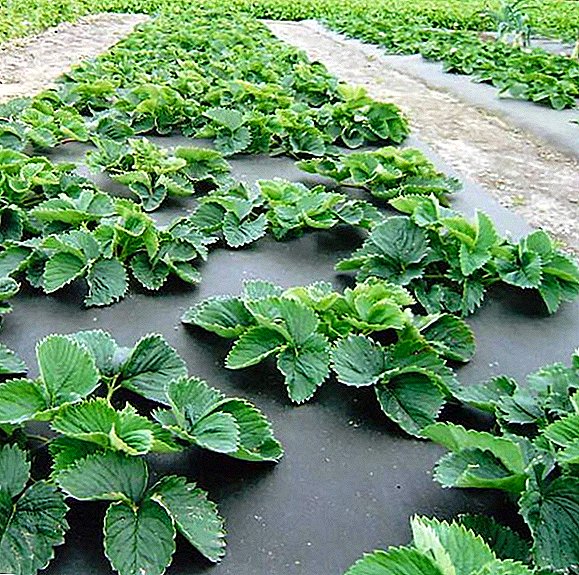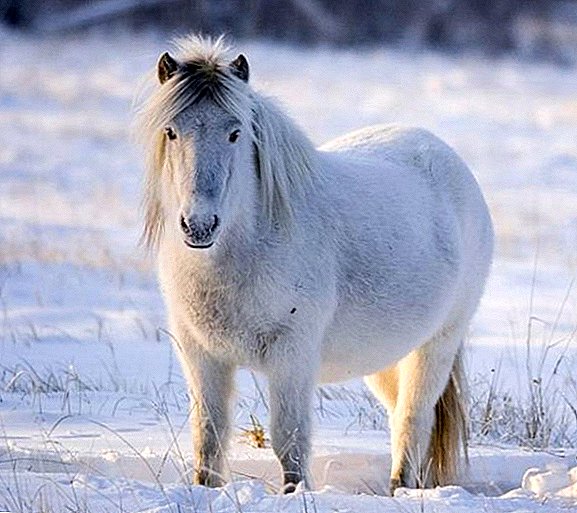 The Yakut horse breed is considered one of the oldest and deserves the attention of farmers due to its high resistance and adaptability to the harsh climate. All year round, these small horses can live in an open paddock, and besides, they are not at all whimsical about feeding. In more detail about the advantages and disadvantages of these horses, we will describe later in the article.
The Yakut horse breed is considered one of the oldest and deserves the attention of farmers due to its high resistance and adaptability to the harsh climate. All year round, these small horses can live in an open paddock, and besides, they are not at all whimsical about feeding. In more detail about the advantages and disadvantages of these horses, we will describe later in the article.
History of
The first written records of this type of horse date back to 1634, when the Cossacks, in a letter addressed to the Moscow Tsar Mikhail, described the Yakut area and its traditions of horse breeding. However, in contrast to this version, some researchers, citing the findings of a number of genetic examinations, insist on an Asian-Mesopotamian origin of the Yakut breed.
Did you know? The ancestor of zebras, donkeys and horses is the eo-hippus that appeared 60 million years ago. This small herbivorous animal weighed only 5 kilograms with a height of 35 cm and had 4 toes on its front legs and 3 on its back.Despite these differences in the definition of the ancestors of unique racers, who can withstand temperatures from -60 ° C to +40 ° C, the fact of their extinction has become history. The situation was saved by the zealous horse breeders, who in 1943 created a special farm specializing in breeding Yakut horses.
Video: description of the Yakut horse breed
Breed description
Horse breeders, who have already dealt with the Yakut maned, characterize them as possessors of the best horse qualities. They have a non-standard appearance, smart, hardy in work and conditions of detention.
Did you know? Horses, which contemporaries call wild, are in fact wild. For example, mustangs are descendants of horses, which in the 16th century were brought by the Spaniards to America. The only truly never tamed species can be considered Asian wild horses.
Specialists, depending on the localization sites and features of the exterior, distinguish several internal subtypes:
- north original - includes the Verkhoyansk and Middle Kolyma horses, which were bred as a result of the crossing of the Baikal and Late Pleistocene breeds;
- south fine - descendants of its representatives are suntar, Megin and Lekmin horses, which are distinguished by higher growth at the withers;
- southern large - The mass of some individuals of this subspecies can reach 600 kg, are more common in Yakutia and the Nyurbinsk region of Russia.

Appearance
According to external signs, the Yakut breed stands out:
- elongated body (oblique length within 149 cm);
- non-standard height of withers (in adult individuals, these parameters range from 136-138 cm);
- big massive head;
- thick, relatively short neck;
- flat and long back;
- wide breasts that in girth of stallions can reach 170 cm;
- long thick and fluffy hair (in winter, the hair of Yakut horses can grow up to ten centimeters in length);
- dense undercoat, which is about 80% of the entire skin;
- lush tail touching the ground;
- luxurious mane that covers the horse's neck and shoulders;
- standard weight (half year old stallions weigh no more than 100 kg, by the age of 2.5 years this parameter increases by 70 kg, and in 5-6 years the horse gains about 450-600 kg);
- thick skin, under which the body fat layer hides (in an adult horse it can grow to a ten-centimeter thickness);
- low but strong legs;
Did you know? Indicator horse age are teeth. Blessed Jerome, who never took money for his books, in the 4th century launched a famous expression that does not advise inspecting the teeth of a donated horse..
- pastel circumference in stallions 20 cm, in mares - 18 cm;
- Savravim, brown (rare), gray, white or brown color.

Suit
Today, in the open spaces of Russia, gray and mousy Yakut horses are the most common, less often savras. However, many pure white animals live in Yakutia. This suit does not discredit their pure blood. The fact is that the horses of this breed are subject to early grazing. Usually this process is completed by the age of four.
Learn how to choose a horse for yourself, how to name a horse, and also how to transport it.
In addition, the breed standard allows for brown and bay color, but such representatives are almost never encountered. This nuance should be considered for those who want to acquire pedigree maned wards.
Character
Another feature of this unique horse species is intelligence, subtle mind and friendly disposition. Pets never show aggression towards people and neighboring animals. They always meet the owner and other members of his family affably.  The Yakut racers feel much more comfortable in the herd, therefore they are recommended to be kept in herds consisting of 1 stallion and 15-20 females. Characteristically, the breeders have repeatedly tried to violate the purity of the breed, crossing it with other relatives. However, these attempts were not crowned with success, as a result of which the species still retained its original nature.
The Yakut racers feel much more comfortable in the herd, therefore they are recommended to be kept in herds consisting of 1 stallion and 15-20 females. Characteristically, the breeders have repeatedly tried to violate the purity of the breed, crossing it with other relatives. However, these attempts were not crowned with success, as a result of which the species still retained its original nature.
Important! It is strictly forbidden to brush a horse before, during and after feeding. The ban also applies to sweating animals.
Advantages and disadvantages
The Yakut horse is a typical native breed bred by popular selection under the influence of natural selection. It has an optimal set of characteristics characteristic of the northern areas of Russia. Experienced horse breeders distinguish a number of advantages and disadvantages of the variety. Consider them below in the table.
| Virtues | disadvantages |
| Increased endurance in work (representatives of this breed can ride more than 20 km without harm to their own health). Also copes well with traction load. | Low race qualities, compared with other breeds, due to the physiological characteristics of short legs. |
| Adaptation to harsh climatic conditions. Due to the dense and long hair, the Yakut horses are well experienced both cold and heat. This feature contributes to the versatility of pets. | Specific appearance, which is expressed by a powerful body and a small height. |
| Independence to domestic comfort. All year round the herd can be kept on the street without requiring special equipment and feed (animals are used to extract dry grass from under the snow). However, pets will be delighted with fresh hay and good pasture. | Excessive self-sufficiency. The Yakut breed is considered aboriginal. Horses do an excellent job without human help and do not always allow themselves to be saddled. This is possible only after prolonged contact and good attitude towards the animal. If you piss him off, it will somehow resemble a predator. |
| High productivity. Yakut horses use for receiving meat and dairy products and riding. |
Important! Particular attention in the care of horses require their hooves. Lack of hygiene, improper maintenance and poor diet are often the main causes of animal health hazards. Therefore, every day you need to inspect and clean horse horn shoes.
Scope of application
Yakut racers are grown as a very strong and enduring labor. Despite the lowness and stocking, these animals are used by Russians for riding. Moreover, the indigenous people of Yakutia are very kind to these horses, honoring them for their divine gift.  Many local legends mention the deity Jessegui, who is the patron saint of stallions and brave men. In his honor, the Yakuts annually arrange happy holidays, the central event of which is the horse racing of representatives of this horse breed.
Many local legends mention the deity Jessegui, who is the patron saint of stallions and brave men. In his honor, the Yakuts annually arrange happy holidays, the central event of which is the horse racing of representatives of this horse breed.
However, in addition to fun, heavy work in a harsh Yakut climate also fell to the share of the manes. But with this task, the horses manage without prejudice to their own health, because their lifespan, as well as their performance, are measured in 27-30 years.
It is characteristic that local horse breeders never use riding horses for other purposes. Many representatives of this species participated in the winter expeditions to develop the North of Russia, because they can travel a long distance, even on the snowy roads.
Did you know? Horses have an exceptional sense of smell, which helps them to sense the nervousness of the rider. Previously, in order not to cause aggression in difficult-to-manage animals, the owners lubricated their hands with aromatic oils. Also, the horses are very nervous from the smell of blood.For local hunters, these animals are a real find, since they are able to navigate well the terrain. They are used for freight and dressage.

The second direction of use of the Yakut horses is meat and milk. For such purposes, suitable individuals who have never known the saddle and bridle. Horse milk is used to make koumiss, which is the national drink of the Yakuts.
Horsemeat is also included in their culinary traditions and is considered a gourmet dish. The meat has a high calorie content, exquisite taste and marble structure. However, fatty blotches do not spoil it, but, on the contrary, give an amazing softness.
Conditions of detention and care
Since this variety very quickly adapts to new conditions and does not require additional "amenities", caring for its representatives will not cause much trouble for breeders. In the blood of mares and stallions genetically incorporated the ability to survive in natural conditions. Therefore, such individuals will be extremely uncomfortable in a closed stable.
Important! Horse hoof is an extremely complex and sensitive organ. When the weight of the animal presses on the cornea, blood from the foot is pushed up through the veins. Thus, this part of the body plays the role of a circulation pump. That is why it is recommended that horseshoes be replaced every month. After all, their long wearing prevents the natural expansion of the sole when walking, which is fraught with a number of dangerous horse diseases.
For them, the presence of a herd and free space is important. Therefore, if you plan to keep Yakut horses in a closed pen, always leave access for free movement in the designated area.  Experienced horse breeders recommend a rural farm as an ideal option for keeping the Yakut breed. In addition, the breeder will need to care for their wards.
Experienced horse breeders recommend a rural farm as an ideal option for keeping the Yakut breed. In addition, the breeder will need to care for their wards.
These activities include the following procedures:
- periodic combing of the mane and tail with the crests;
- daily inspection and cleaning of the hooves, including using special horse hooks;
- cleaning the head, neck, back, legs, which is done with soft and hard brushes;
- veterinary inspection, which is recommended every 6-12 months;
- brushing your teeth with a special sponge (recommended every six months);
- eye rinsing (done with designated sponges);
- daily washing with warm water of the external genital organs and udder, cleaning it from fatty effusion.
Read the description of the best riding horses.In winter, the care of the Yakut horses is limited to the removal of sweat on the skin, combing and hygiene of the hoof.

Feeding
In the selection of food Yakut racers are picky. They are accustomed to the marriage of feed, as in the natural environment they are mined from under the snow. Under farm conditions, experts advise not to test the strength of their wards with extreme conditions of upkeep and provide them with one of the most popular types of feeding in horse breeding: target or forced.
Representatives of this breed eat hay, grain. With the onset of summer they are taken to pastures. In addition, animals are very fond of beets, carrots, potatoes, apples, sugar.
Important! If the horse does not chew food and pumps are found in its mouth, teeth turning will be necessary. The procedure is carried out by a veterinarian.
Foals of mares, as well as young animals before entering into the phase of puberty, are recommended to be regularly fed with high-quality feeds. In order for the wards not to suffer from annoying blood-sucking insects in the warm season, special scaring smoke smoke will be needed.  As you can see, Yakut horses do not require special care and are not picky, which makes them versatile and practical. And the observance of elementary rules in the care and maintenance of these self-sufficient pets ensures their activity and good health.
As you can see, Yakut horses do not require special care and are not picky, which makes them versatile and practical. And the observance of elementary rules in the care and maintenance of these self-sufficient pets ensures their activity and good health.


